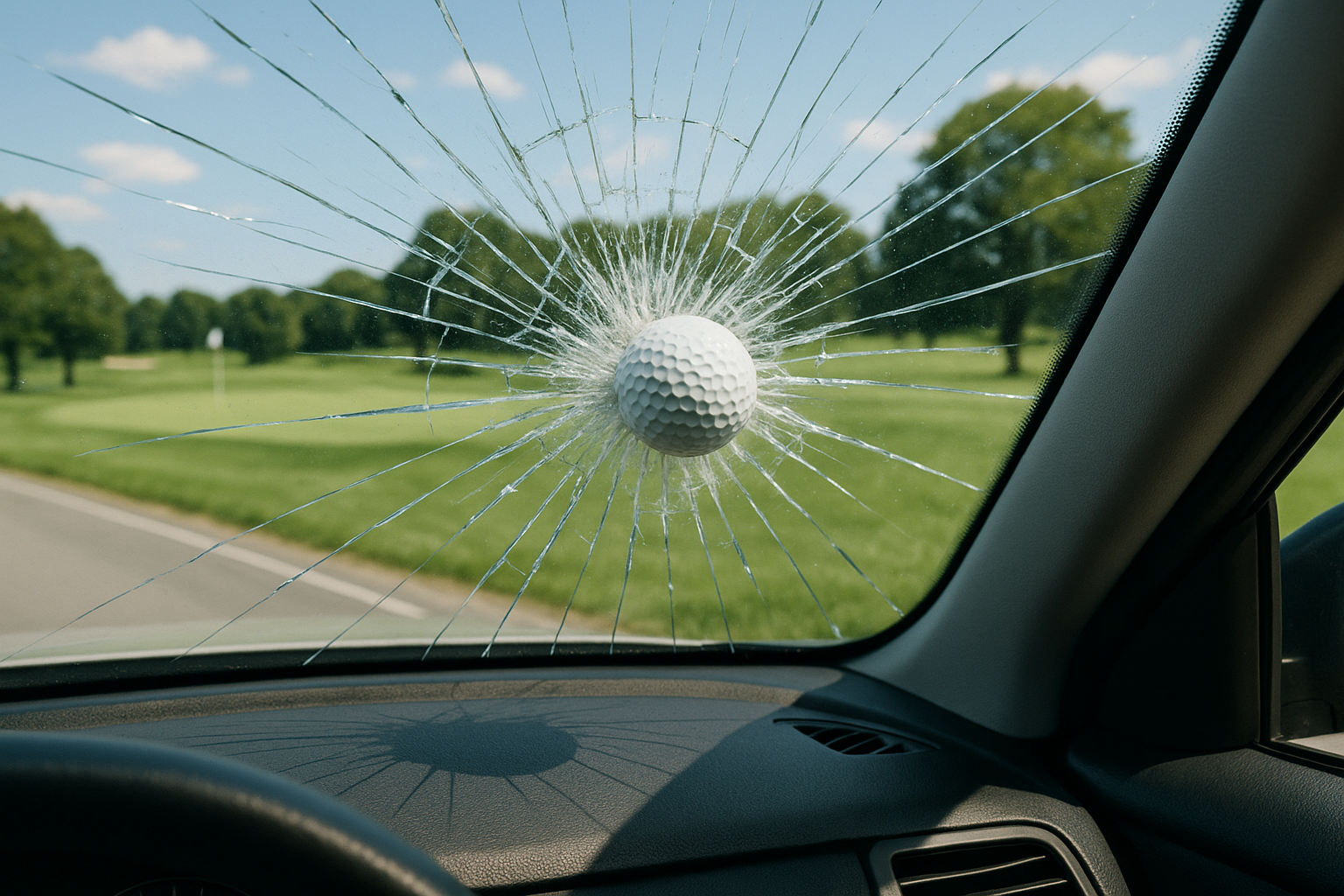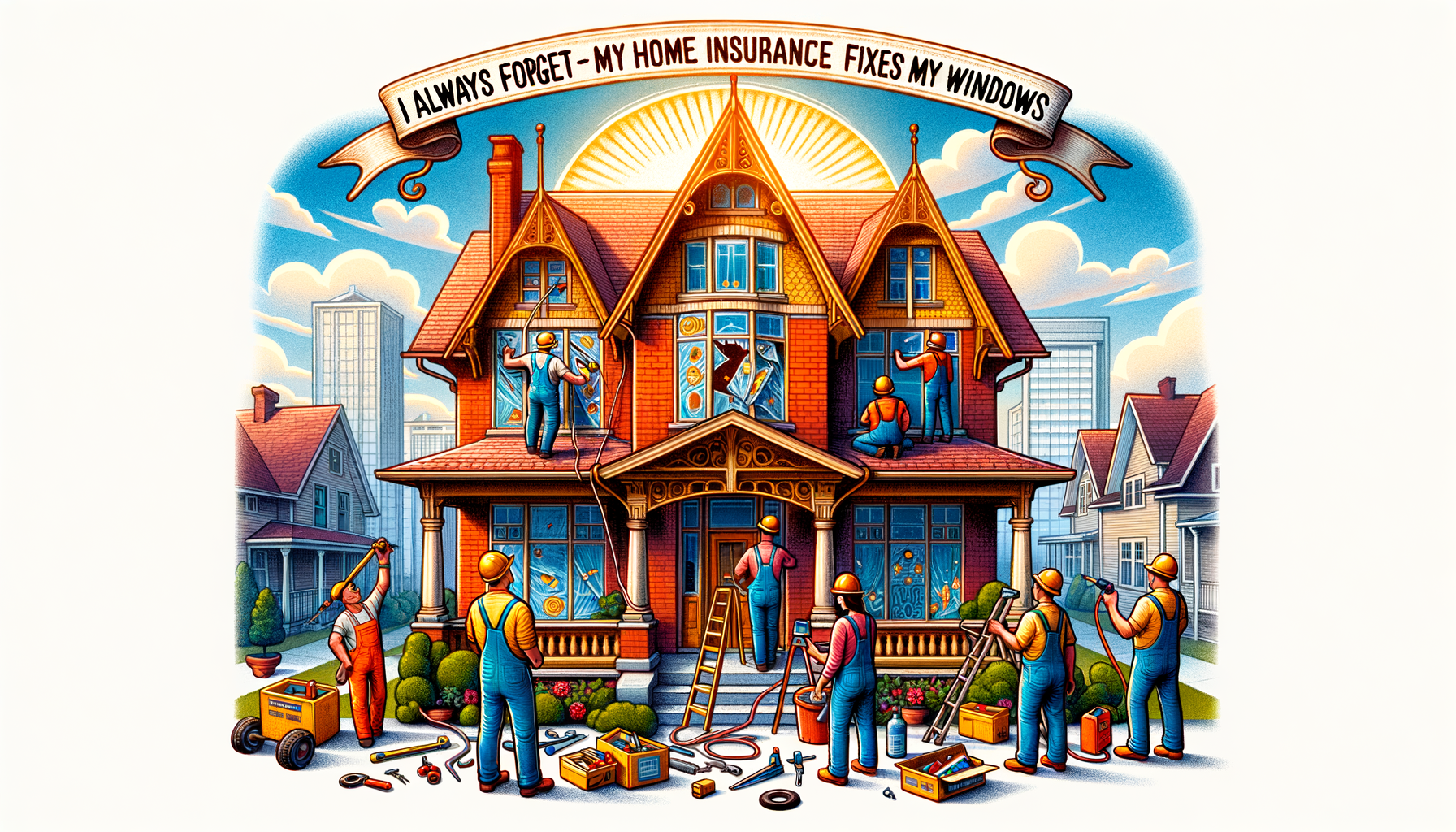Driving near a golf course can be relaxing until the unexpected happens. Suddenly, a stray golf ball crashes into your windshield, leaving you with a costly repair. Many drivers wonder who is responsible for the damage in such situations. The answer is not always straightforward, and it often depends on several factors. Understanding the basic principles of liability, how insurance applies, and the proper steps to take can make the process smoother. By being informed, you can protect your finances and seek compensation when needed. Let’s explore who truly pays when a golf ball breaks your windshield near a course.
Understanding Golf Course Liability for Broken Windshields
Golf courses are generally designed with the intention of keeping stray balls within their boundaries. They often install fences, plant trees, or set up barriers to help prevent accidents. However, no system is perfect, and occasionally, golf balls do leave the course and cause damage to nearby vehicles. In most cases, golf courses are not automatically considered responsible for every incident involving a stray ball.
Courts usually require proof of negligence before holding a golf course liable. If the facility failed to take reasonable steps to limit the risk, such as not maintaining fences or ignoring common problem areas, then you may have a stronger case. On the other hand, if the course has proper protections in place and the event was truly accidental, liability might not rest with the golf club at all.
Additionally, local laws and ordinances play a significant role in determining responsibility. Some areas have specific rules regarding golf courses and their duties towards neighbors and passing drivers. Because laws can differ widely, it is essential to investigate the regulations in your region. Consulting with a local attorney can help clarify where liability may fall in your situation.
Key Factors That Determine Responsibility and Fault
Several elements come into play when figuring out who should pay for your broken windshield. Foremost, the exact location of your vehicle at the time of the incident matters greatly. If you were parked in a designated parking lot provided by the golf course, the facility might be more likely to bear responsibility. Conversely, if you were driving on a public road, the situation becomes more complex.
In addition, the actions of the golfer who hit the ball can be significant. If the person who struck the ball did so recklessly or with poor aim, that individual could be personally liable for the damage. However, most of the time, identifying the specific golfer can be difficult unless witnesses saw what happened or security cameras recorded the event. As a result, proving individual fault is often challenging.
Moreover, the condition and design of the golf course itself can become a key factor. If the course is located unusually close to busy roads or lacks protective features, it may be easier to argue that the course should have anticipated such risks. In any case, the burden of proof typically falls on the claimant, so gathering evidence and documenting the circumstances is always essential.
How Insurance Handles Golf Ball Windshield Claims
Car insurance may help when a golf ball damages your windshield. Comprehensive coverage usually includes damage from falling or flying objects, which can cover incidents involving golf balls. If you have comprehensive insurance, filing a claim under this section can often result in your insurer paying for the repairs, minus your deductible.
However, not all policies include comprehensive coverage, and deductibles can sometimes be higher than the actual cost of repairing the windshield. In those cases, it may not make sense to file a claim at all. It is always wise to check your insurance policy details or speak with your agent before making a decision.
In rare circumstances, your insurance company may attempt to recover costs from the responsible party. This process, known as subrogation, is more likely if evidence of negligence exists on the part of the golf course or a specific golfer. Although success is not guaranteed, your insurer’s willingness to pursue the case can help you avoid paying entirely out of pocket.
Steps to Take Immediately After the Incident Occurs
Acting quickly after a golf ball hits your windshield can help preserve your chances of receiving compensation. Begin by documenting the damage with clear photos from multiple angles. Also, if you can safely do so, try to locate the golf ball and keep it as evidence.
Next, notify the golf course management about the incident. They may have procedures in place for handling such claims, and they might help identify the golfer involved. Obtaining a written statement from any witnesses can further strengthen your case.
Always file a police report or a non-emergency incident report, especially if you plan to make an insurance claim. Contact your insurance provider to explain what happened and follow their instructions for submitting the necessary documentation. By taking these steps promptly, you increase your chances of a favorable outcome.
Seeking Compensation and Preventing Future Damage
When you seek compensation, persistence and thorough documentation can make a difference. Submit your claim to both your insurance company and, when appropriate, the golf course. If you believe negligence played a role, consider consulting an attorney to assess your options and guide you through the process.
You might also want to talk with local authorities to learn if other drivers have reported similar incidents at the exact location. Sometimes, repeated complaints can push golf courses to enhance their safety measures, such as installing higher fences or additional netting. Speaking up can help increase awareness and prevent future accidents.
For added protection, always drive cautiously near golf courses, especially if you notice signs warning of stray balls. Parking away from fairways and staying alert to your surroundings can reduce your risk. Combining proactive behavior with knowledge of your rights gives you the best chance at avoiding both damage and financial loss.
In Summary
Golf ball damage to your windshield can create stress, frustration, and unexpected expenses. Understanding liability, key factors affecting responsibility, and how insurance works helps you approach the situation with confidence. By responding quickly and gathering strong evidence, you improve your chances of receiving compensation. Even though golf courses are not always automatically liable, negligence or lack of preventative measures can shift responsibility in your favor. Insurance policies with comprehensive coverage often provide a straightforward solution, but checking your details and considering deductibles is always smart. If you face resistance or unclear answers, consulting with professionals can clarify your options. Taking action by reporting the incident and notifying the right parties sets an example for others and can lead to long-term safety improvements. Ultimately, staying vigilant and informed offers the best defense against future incidents. While you cannot always prevent stray golf balls, you can prepare to manage the aftermath effectively and protect both your vehicle and your peace of mind.


